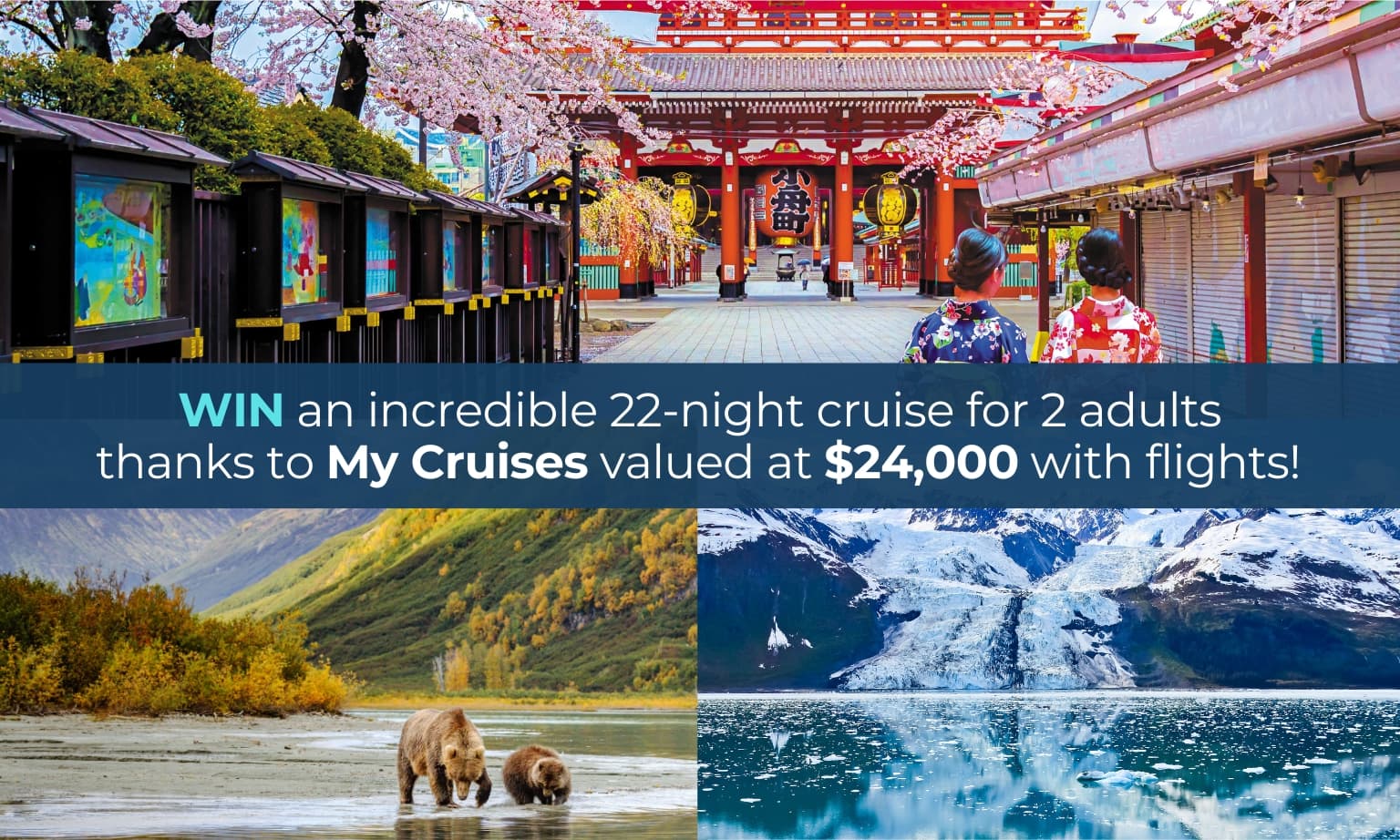“Why would I want to go somewhere cold,” has been my hubby Mark’s stock reply whenever I’ve asked if he’d like to join me on an expedition cruise in the polar regions.
Why, you may therefore be wondering, is he here with me en route to Svalbard on Aurora Expeditions’ ship Greg Mortimer.
When I asked if he’d like to join me on this two-week cruise from Aberdeen in Scotland to Norway and on to the icy wastes of the Arctic, I was only being polite. Imagine my surprise, then, when he said, “I ought to really.”
Nothing to do with being with me, though; rather he wanted to find out what our daughter does working in expedition teams on cruise ships around the world. Coincidentally, one of those ships was Greg Mortimer’s sister, Sylvia Earl, so the cruise was a perfect fit.
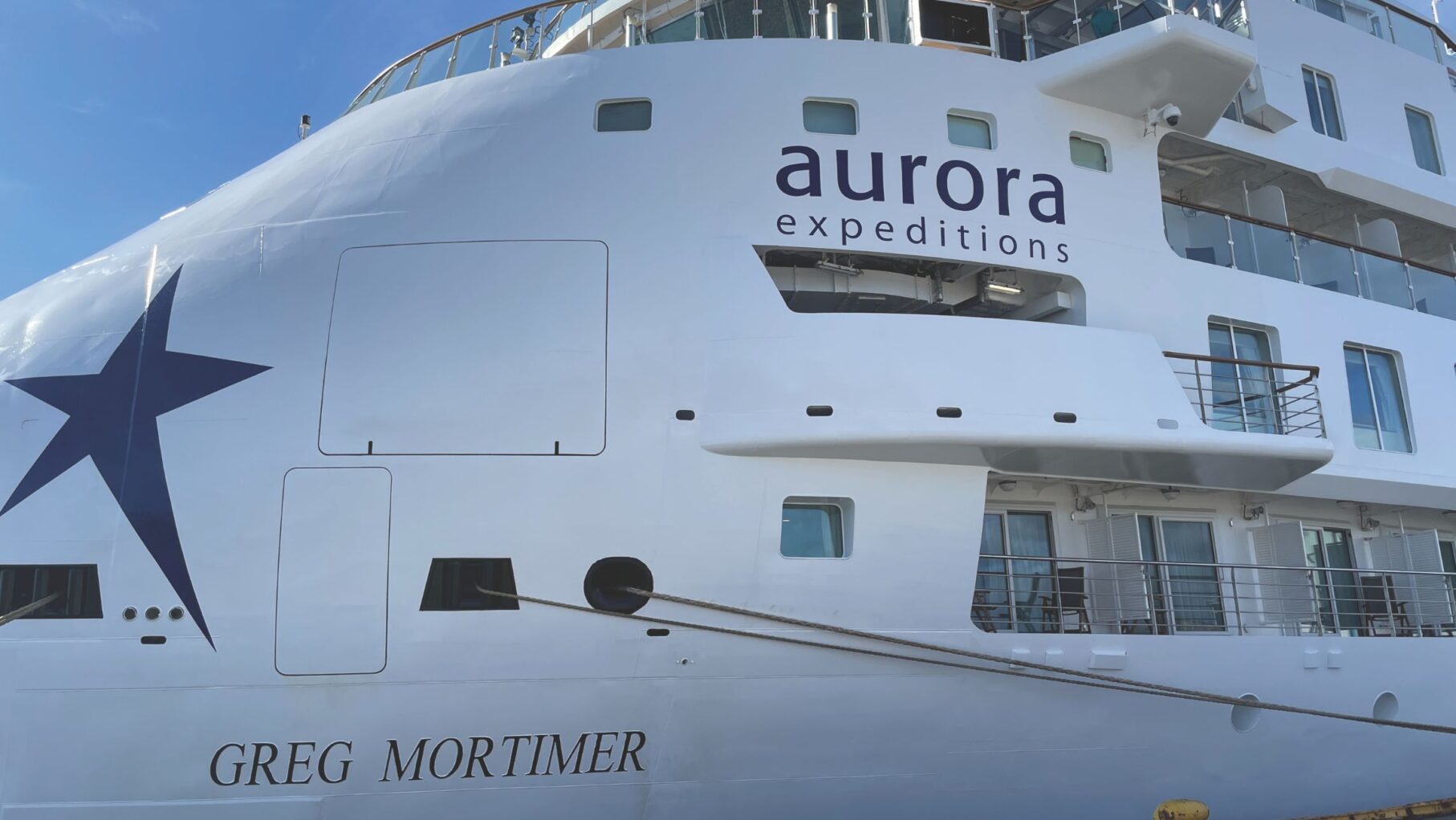
Would he enjoy the cruise? I honestly didn’t know, but any concerns vanished in seconds the first time we went out in the inflatable Zodiacs. We’re in the Shetland Islands, about as far north as you can go and still be in the UK, and heading over to sheer cliffs on the Island of Noss that tower 180 metres above the sea and are buzzing with seabirds.
What a spectacle. Skuas, kittiwakes, guillemots: they are all there, thousands of them, in nests balanced on the rocks, flying above us or diving into the water after some passing fish. And just for good measure, a seal pops his head up to watch us, disappears, then pops up again and repeats over and over. It’s like being in the thick of a David Attenborough show.
“That was fantastic,” Mark enthuses, as we get back on board and strip out of our muck boots, polar jackets, woolly hats and several layers of clothes. It might be summer in Scotland, but it’s cold.
Expedition cruising, you’ll have gathered, is nothing like a holiday at sea with the likes of Carnival, Princess or Oceania. Rather than counting passenger numbers in the hundreds or thousands, offering lots of places to eat and putting on flashy production shows, Greg Mortimer holds just 130 guests, has one restaurant, a lecture room and a mudroom where we store outdoor gear and board the Zodiacs. Being first to change and in line for the inflatables quickly becomes a badge of honour.
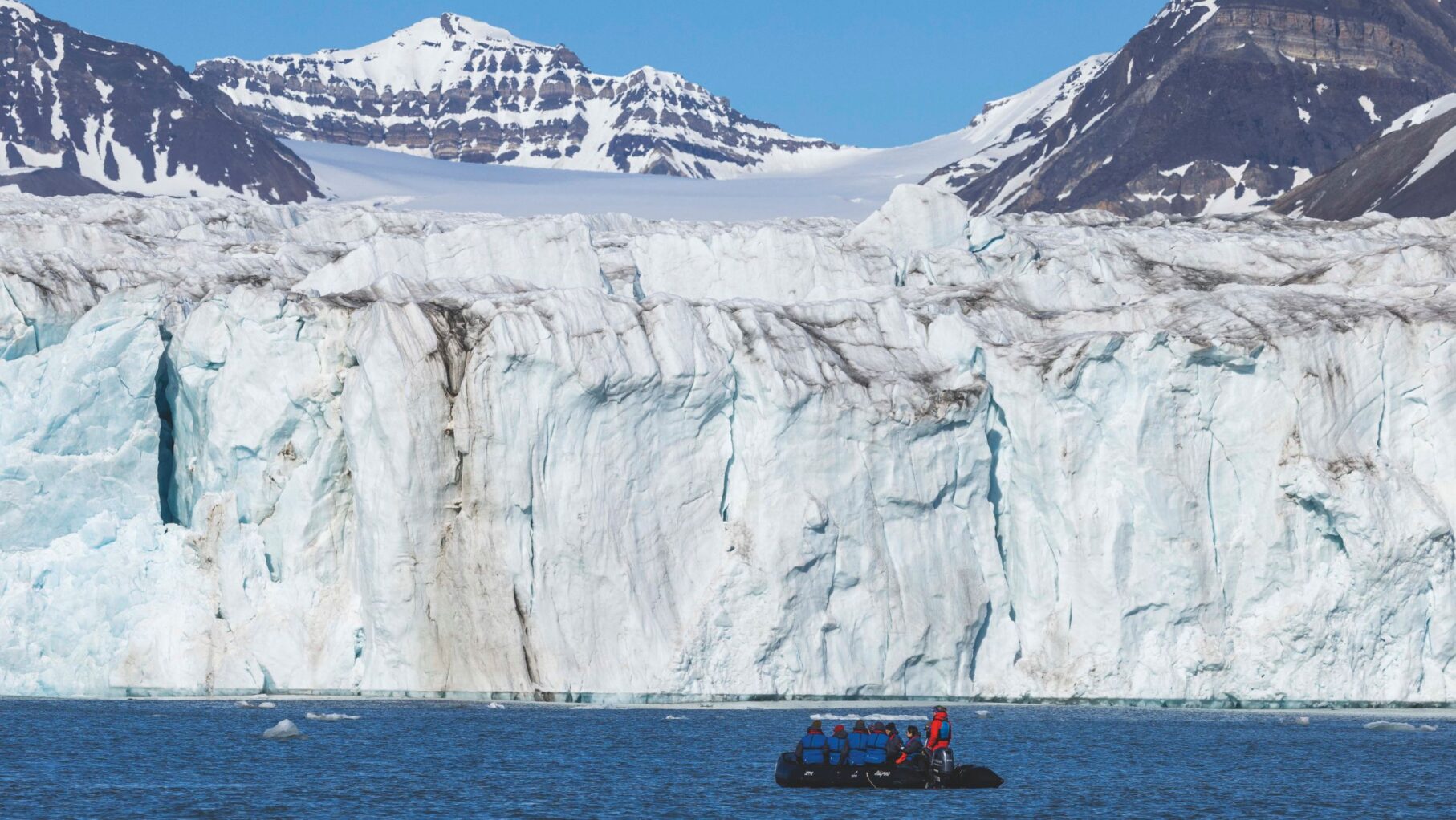
The ship also has that all-important expedition team my husband wanted to see in action – a collection of naturalists, geologists, biologists and other “ists” who use the time while sailing to give talks about polar bears, the climate, Arctic history and more, and take us out on Zodiac cruises or treks ashore on port days. (Two of the team instead take a group of hard-core kayakers out paddling whenever possible.)
And then there is the itinerary, which is really just a guideline, as what we do each day is dictated by the weather. Expedition cruisers don’t just need an adventurous spirit, they have to be flexible too.
Ours is a repositioning voyage, the last leg of Greg Mortimer’s long journey from winter in Antarctica to summer in the Arctic. After three days in the Shetlands that has included puffin-spotting (so cute!), tea and cakes with the locals in Fair Isle (population 50 and hundreds of sheep) and a lot more wind, rain and even hail, there’s a day at sea as we continue north to Norway.
How wonderful! The sky is blue, the sun is shining, and we’ve all stripped down to t-shirts as we set out on various hikes on the Norwegian mainland and in the Lofoten Islands, where one day we’re learning about Vikings in a traditional longhouse and another hiking up Tjeldbergtind mountain, 352 metres above Svolvaer, where our ship is moored.
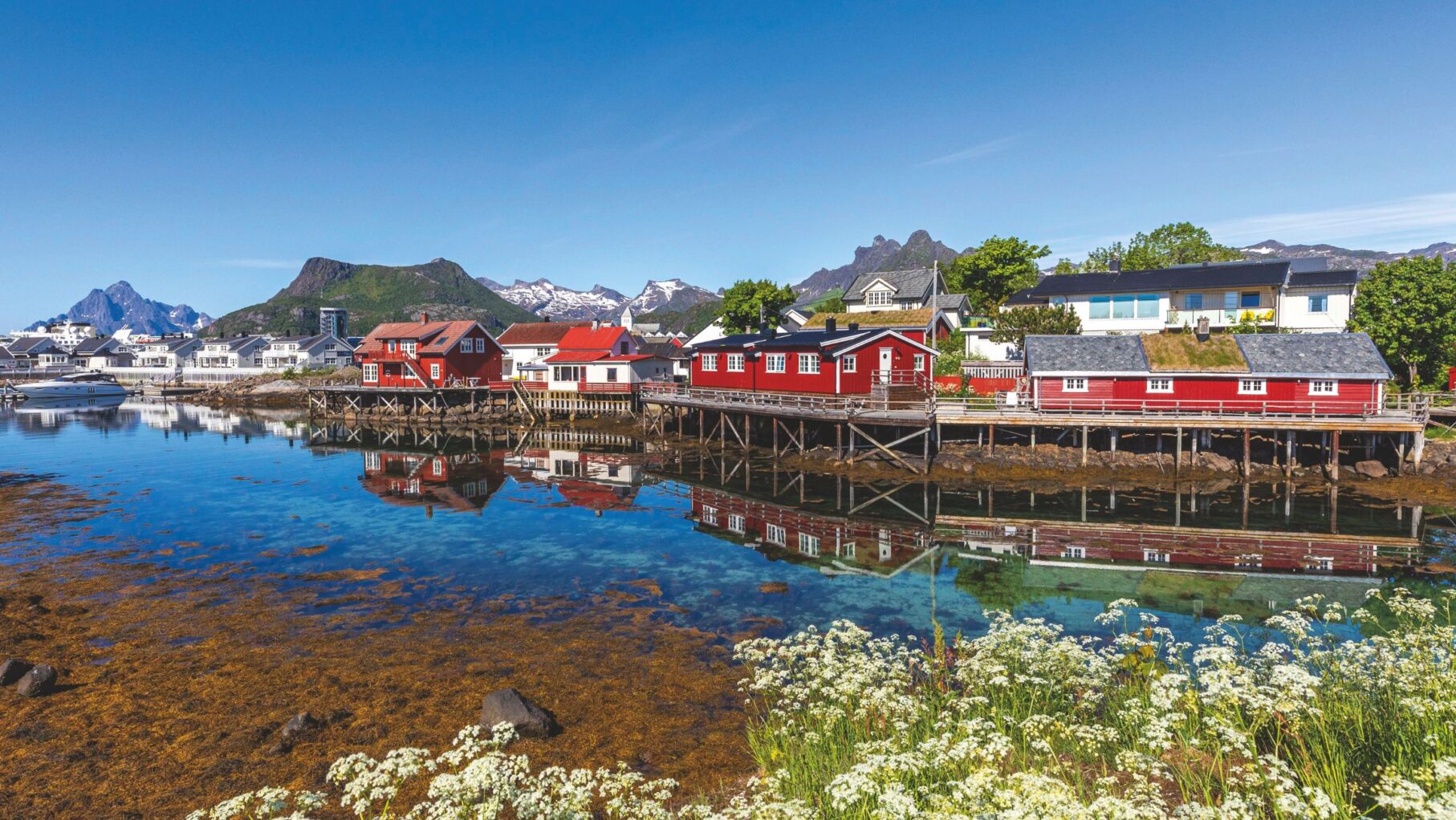
The town is gorgeous, although I can’t say I am enamoured by the cod hung outside: It stays there to dry out for up to 12 weeks and is, shall we say, an acquired smell. Even worse, the heads are cut off and hung separately. The latter are exported to Nigeria; the other parts go mostly to Italy and Portugal.
As we sail towards our exciting final destination, Svalbard, it’s time for a mandatory dos-and-don’ts briefing. Do keep a distance from animals and avoid making loud noises around wildlife. Don’t step on plants, take souvenirs, stray from your group or take off your life vest when ashore – in case you have to beat a hasty retreat to the Zodiacs to get away from a polar bear. Above all, don’t panic if you do see a bear. Hmm. Not sure how that will play out, given they are not as cuddly as they look and can run faster than us.
Jeff, the firearms expert on the expedition team, has more useful advice. “If you see a bear, everyone come together and stay quiet. And it is not the time to take photos.”
Thus primed, we make our first landing, but not before the area has been carefully scouted. Once ashore, the expedition team, all carrying rifles but trained to shoot to scare unless the worst happens, are stationed at each end of the landing sites to keep an eye out for bears, with others at various points in between to tell us about life in this frozen wilderness (Svalbard is part of Norway and inhabited), as well as the plants, birds and animals that live here.
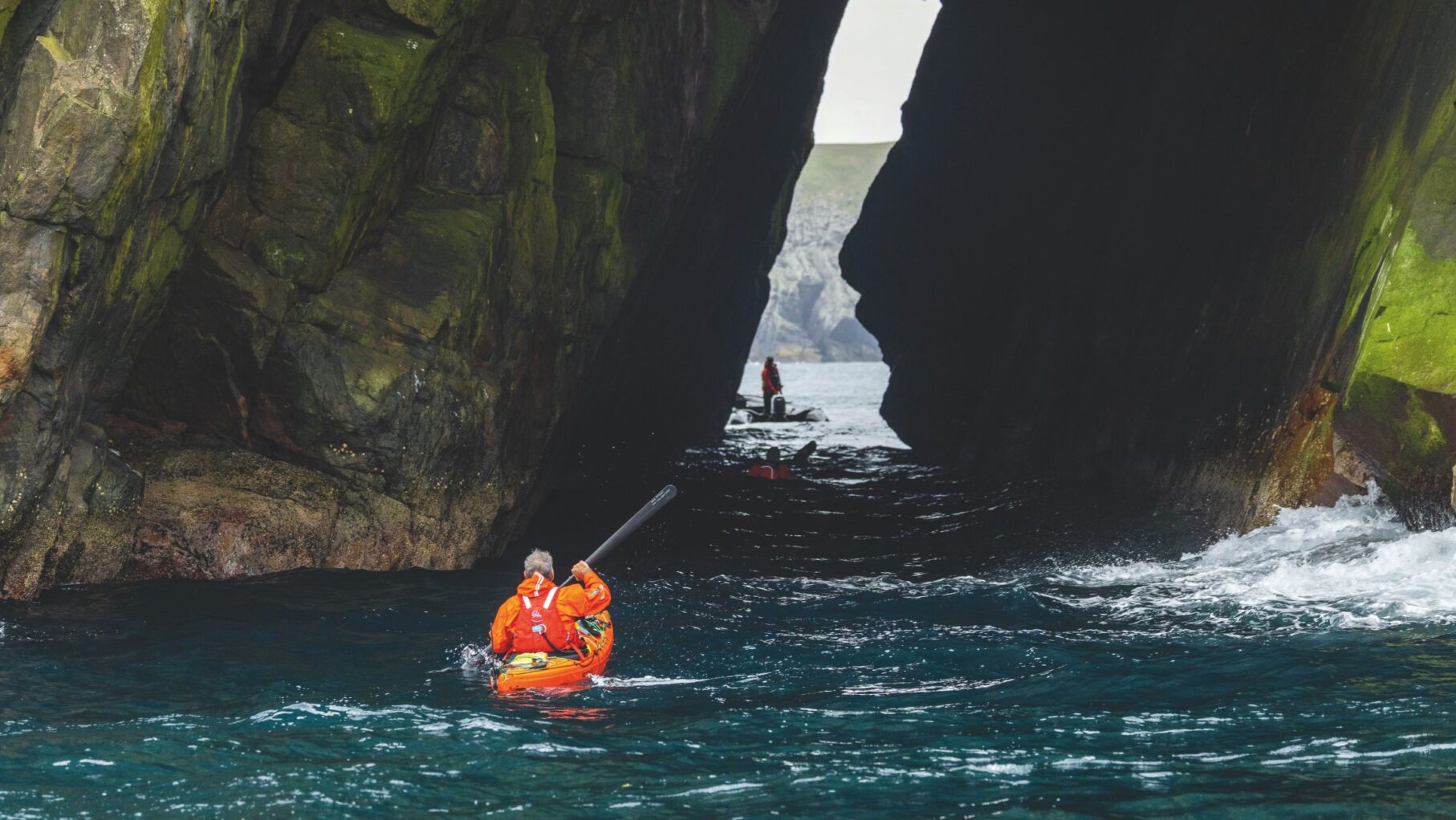
We see numerous reindeer, an abandoned mine, and huts from which Norwegian fur trappers hunted polar bears until that was outlawed in 1973. There were barely 1000 bears left in Svalbard at that time. Now there are an estimated 3000. On the island of Poolepynten, we are allowed to creep slowly and silently towards a herd of walruses, watch them for 15 minutes and then retreat so others can follow in our footsteps.
That afternoon Greg Mortimer relocates, and we head out in the Zodiacs to see Gaffelbreen, a huge glacier at the end of St Jonsfjord. The scenery is spectacular, the sky is blue, the sun is shining (don’t be fooled, it’s also very cold!), we are crunching through thick ice and every so often a seal pops its head up to watch us. Magical doesn’t even come close.

Our fellow passengers – most from the UK, lots from Australia and many on their first expedition cruise – have just one teeny niggle. We’ve not seen a polar bear.
Cue super-human efforts by the captain and expedition guys to find one, and untold excitement when they do. There he is, sitting on the ice, totally unfazed by his new celebrity status, even when the Zodiacs are lowered so we can get a closer look. Mission accomplished!
By the time we disembark in Longyearbyen, Svalbard’s capital, everyone, Mark included, is an expedition-cruise convert. Me? I was converted when I came here years ago with my daughter. We sailed around Spitsbergen, the largest island in the Svalbard archipelago, and saw so many polar bears that I gave up counting. Sightings are never guaranteed, but if they are top of your hit list a circumnavigation has your name on it.
Aurora Expeditions (1800 637 688; auroraexpeditions.com.au) has an eight-day Spitsbergen: Realm of the Polar Bear cruise on Greg Mortimer departing 16 June 2025 from $18,495 per person. The price includes return charter flights between Oslo and Longyearbyen, all excursions, wine or beer with dinner and a polar coat. Kayaking is extra, from $1250 for the whole cruise.
Expert tips
Favourite meal: The food was very good, but the one I went back for three times? The bistecca alla griglia (sirloin steak, to you and me) in the Tuscan Grill, which is part of the main dining area but opens as a speciality restaurant in the evenings. There’s no charge, but you need to book.
What to pack: Plan for casual on board and layers for the trips ashore and Zodiac cruises. T-shirts and fleeces, a couple of pairs of pants, waterproof trousers, leggings, walking boots, gloves, hats, sunglasses and binoculars will do the trick. Aurora lends you muck boots and gives passengers a thick coat with a removable lining that doubles as a lighter jacket if it’s not too cold, so you don’t need to pack either.
Secret tip: Stock up on drinks packages on day one and if things change, which they do due to wind, waves, ice or prowling polar bears, order a beer and relax while the expedition team work out a plan B.






